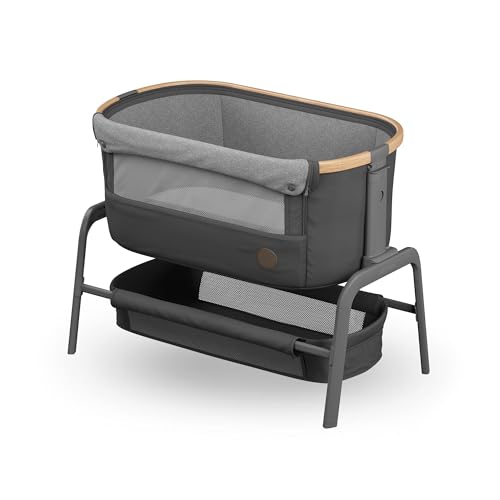The Benefits of Using a Bedside Cot for Nursing: A Comprehensive Guide
In the last few years, the principle of co-sleeping, especially the use of bedside cots, has actually acquired much attention among new parents and caregivers. Bedside Cot For Convertible Use is a type of baby bed that is designed to firmly connect to the side of an adult bed, offering a safe sleeping environment for infants while promoting ease of access for breastfeeding mothers. This post will check out the numerous advantages of bedside cots for nursing, various types readily available, factors to consider for choosing one, and regularly asked questions.
The Advantages of Bedside Cots for Nursing
1. Improved Accessibility
One of the most considerable advantages of a bedside cot is the ease of access it offers. Nursing moms can merely reach over to pick up their baby without the requirement to stand up or move far from bed. This benefit enables:
- Quick night feedings
- Increased comfort for the mother
- Minimized danger of disruptions to both mom and baby during nighttime care
2. Promotes Bonding
Nursing is more than just a means of nutrition; it is also a chance for moms to bond with their infants. A bedside cot facilitates this connection by allowing mothers to preserve close proximity to their babies throughout sleep. This nearness can cause:
- Enhanced emotional connection
- Increased milk production due to regular nursing
- A sense of security for the infant
3. Encourages Extended Breastfeeding
The benefit of having a bedside cot motivates longer breastfeeding periods. Mothers are more likely to follow their baby's feeding hints and react without delay when they can quickly access their child. The benefits of extended breastfeeding consist of:
- Improved nutritional consumption for the baby
- Improved developmental benefits
- Enhanced immunities through breast milk
4. Supports Safe Sleep Practices
Bedside cots are developed with safety in mind, allowing parents to maintain close supervision over their sleeping infant. By sticking to safe sleep suggestions-- such as putting the baby on their back to sleep and guaranteeing a firm mattress-- parents can create a safer environment. Features that add to safety might consist of:
- Breathable sides to prevent suffocation
- Durable, non-toxic materials
- Adjustable heights to match the adult bed
5. Flexible Use
A bedside cot can serve as both a crib and a co-sleeping plan. Numerous designs are adjustable in height or can be entirely detached for use as a standalone crib when the kid grows older. This flexibility offers long-term use and value.
Types of Bedside Cots
Bedside cots can be found in various styles and styles. Below are some typical types:
| Type | Description |
|---|---|
| Co-Sleeping Cribs | Full-sized cribs that can be securely connected to the side of the parents' bed. |
| Bassinet-style Cots | Smaller, portable cots that fit beside the bed and are light-weight for easy transport. |
| Convertible Baby Beds | Cots that change into different types of beds as the child grows, typically consisting of young child and youth bed options. |
| Foldable Playards | These can be used as both a sleep location and a play area, quickly kept when not in use. |
Considerations When Choosing a Bedside Cot
When choosing a bedside cot, parents need to think about a number of key factors:
Safety Features
- Search for mesh sides for ventilation.
- Ensure that the cot meets security requirements and regulations.
Reduce of Use
- Check for adjustable height settings to line up with your bed.
- Think about how easily the cot can be moved if needed.
Size and Space
- Make certain there is adequate space in the bedroom for the cot.
- Select a crib that fits easily without taking excessive room.
Portability
- If travel is frequent, think about a light-weight model that can be quickly folded and transported.
Sturdiness and Material
- Go with top quality materials that provide sturdiness and are easy to tidy.
Regularly Asked Questions
1. Are bedside cots safe for sleeping?
Yes, when used correctly and following security guidelines, bedside cots are usually safe for infants to oversleep. Constantly guarantee that the cot is firmly connected to the adult bed which there are no gaps.
2. Can I use a bedside cot for a newborn?
Many bedside cots are created for newborns and can accommodate them securely. Always examine the manufacturer's suggestions for weight limits and age viability.
3. How can I guarantee my baby's safety while utilizing a bedside cot?
To ensure safety, always place your baby on their back to sleep and regularly examine that the cot is securely connected to your bed. Maintain a clutter-free sleeping environment.
4. When should I transition my baby from a bedside cot to a crib?
Repeatedly, parents shift their kid to a crib when they are around 4 to 6 months old or when they start to roll over often. Nevertheless, the specific timing depends on the baby's development.
5. Can I use a bedside cot for several babies?
Bedside cots are usually developed for single infants. If parents have twins or multiples, it's suggested to use different sleeping arrangements to guarantee security.
Bedside cots use many advantages for nursing moms, including availability, security, and promoting a strong bond in between mother and kid. By choosing the best kind of bedside cot and considering security features, parents can produce a nurturing environment for their infants. As the pattern of co-sleeping continues to rise, providing a safe and comforting setup is crucial for the wellness of both baby and caretaker. With the ideal information and resources, parents can navigate this new chapter in their lives much better prepared than ever.

